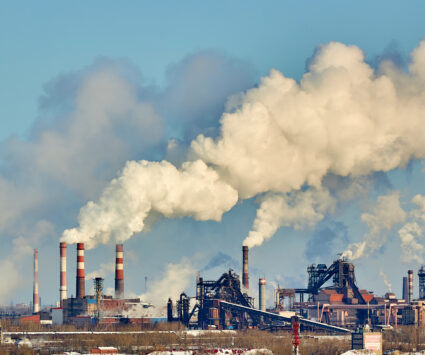6 Environmental Causes of Cancer and How To Protect Yourself
By Jane Meggitt
Cancer is not one disease. There are more than 200 types of cancer, and many of them result from environmental exposure. Environmental causes of cancer run the gamut. The good news is that you can protect yourself from some environmental causes of cancer by practicing healthy habits.
6 Environmental Causes of Cancer
Some cancers are genetic. Anyone with a family history of cancer should have regular medical checkups and discuss their cancer risks with physicians. Those with no hereditary cancer history are equally susceptible to carcinogens in the environment. Carcinogens are any substances causing cancer development.
Carcinogens surround us. They are in the air, water and food. It isn’t possible in the modern world to avoid carcinogens completely, but it is critical to keep exposure to a minimum. The amount and length of exposure play a role in whether cells become cancerous.
UV Light
The sun’s ultraviolet rays lead to skin damage and are responsible for most cases of skin cancer. This includes melanoma which often proves fatal.
Stay indoors as much as possible in the heat of the day. When outdoors, always wear sunscreen to protect your skin from UV rays. Wear sunglasses to protect your eyes. A wide-brimmed hat and long sleeves and pants offer additional UV protection.
Pollution
Breathing pollutants into the lungs can cause cancer in many parts of the body. Many of the particulates inhaled are carcinogenic. Countries with low smoking levels but high rates of indoor air pollution attribute many lung cancer cases to pollution.
Radon
Radon, an odorless, colorless radioactive gas, is found in virtually all air. In some places, radon enters the groundwater, exposing users to it. When people are exposed to high levels of radon, they are at greater risk of developing lung cancer. Smoking is the biggest cause of lung cancer, but radon exposure ranks second.
Many homes contain excess amounts of radon, especially in basements and first-floors. Have your home tested to determine its radon levels. Various mitigation measures exist depending on the severity of the problem.
Tobacco Use
Tobacco use is probably the single largest cause of environmental cancer. It is a factor in many types of cancer in addition to lung disease. It also contributes to cancers of the:
- Bladder
- Blood
- Esophagus
- Larynx
- Mouth
- Stomach
- Throat
Secondhand smoke is a carcinogen. So, stay out of the vicinity of smokers. Chewing tobacco is another culprit. It is responsible for many oral cancers.
Workplace Exposure
Those working in certain industries may come into contact with carcinogens. For example, workers exposed to asbestos are vulnerable to mesothelioma — an aggressive cancer developing in the lining of the lungs or abdomen. The disease results primarily from asbestos particle inhalation.
The U.S. Department of Health and Human Services currently lists 248 “agents, substances, mixture and exposure circumstances” known or suspected to cause cancer in people. These include:
- Arsenic
- Asbestos
- Benzene
- Coal tar and pitch
- Ethylene oxide
- Formaldehyde
- Soot
- Vinyl chloride
- Wood dust
Keep in mind this is just a small sampling. Your workplace should have protocols in place for dealing with potential carcinogens. Always follow safety instructions such as wearing masks when working with chemicals.
Nutrition
Nutrition plays a role in the development of certain cancers. This is an environmental factor that most of us can control. By avoiding processed, fatty and sugary foods and consuming a diet made up of fruits, vegetables and lean meats, you can reduce your cancer risk. Keep alcohol consumption to a minimum. Excessive drinking raises the cancer odds.
As it is for many other diseases, obesity is a major cancer risk factor. Obese individuals have significantly higher risks of developing the following types of cancer:
- Breast
- Colorectal
- Endometrial
- Gallbladder
- Gastric
- Liver
- Kidney
- Pancreatic
Speak with a doctor specializing in weight loss. They can put you on a personalized diet and exercise plan to help you lose weight. They can also discuss bariatric surgery and other options.
Cancer Medical Treatments
Life-saving medical treatments for another condition can lead to cancer down the line. This includes radiation and chemotherapy. Tamoxifen, a first-line drug for breast cancer patients, may cause uterine cancer. Patients are informed of these additional risks and should undergo regular monitoring so any new cancers are caught at an early, potentially curable stage.
We’re Here To Help
At Yosemite Pathology and Precision Pathology, we are your efficient, quality-focused partner in patient care. Since 1948, we have been a leader in the advancement of anatomic pathology in the Western United States. Our team encompasses more than 30 board-certified anatomic pathologists. For more information about our services and partners, contact us today.
Jane Meggitt’s work has appeared in dozens of publications, including USA Today, Zack’s, Financial Advisor, nj.com, The Houston Chronicle and The Nest. She is a graduate of New York University.
Sources
American Cancer Society – Ultraviolet (UV) Radiation
Edward-Elmhurst Health – Environmental factors that cause cancer
National Cancer Institute – Cancer-Causing Substances in the Environment
National Cancer Institute – Radon and Cancer
Illinois Department of Public Health (IDPH) – Cancer and Your Environment
National Toxicology Program (NTP) – 14th Report on Carcinogens

